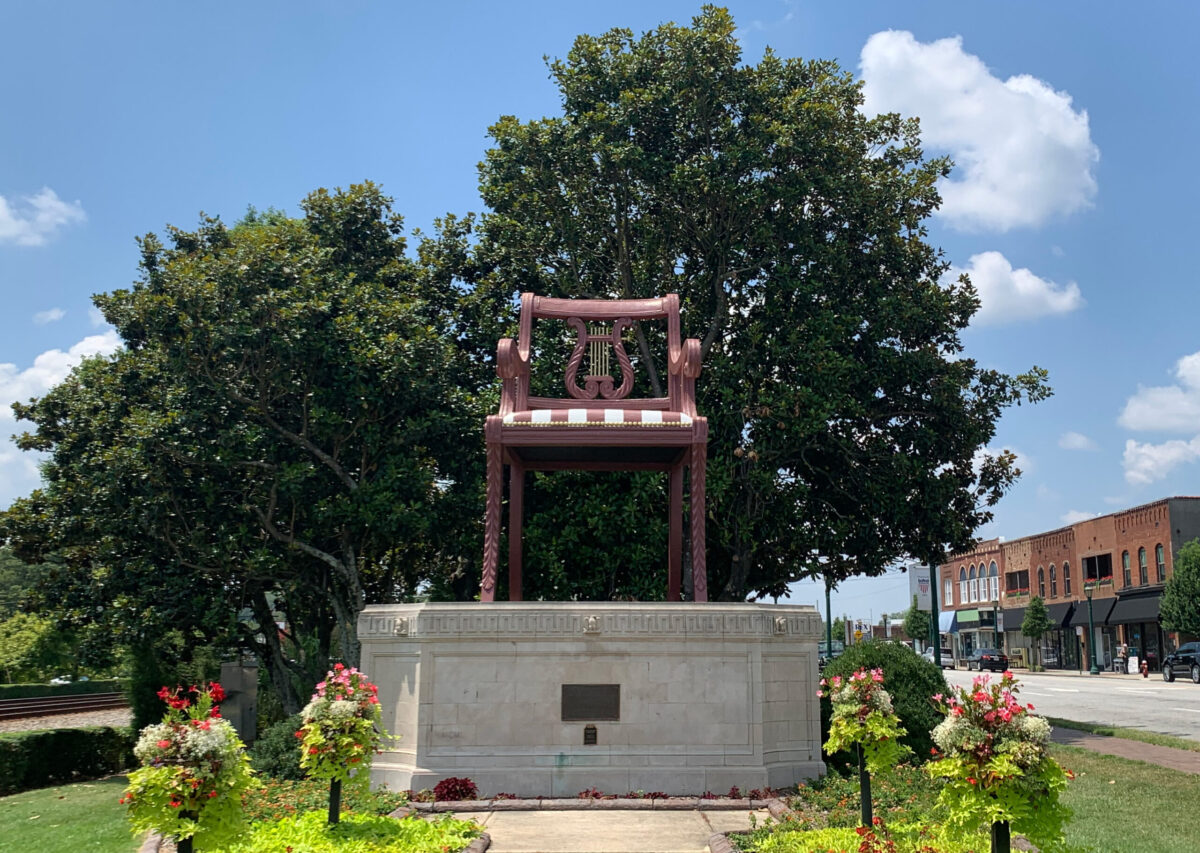The train still rolls through Thomasville, N.C., several times a day. When it approaches, the howl of its horn is met with bells and flashing red lights. The streets rattle briefly, and it’s not hard to imagine the small railroad town bustling with excitement in its heyday. A large chair sculpture stands sentinel next to the tracks. It’s the centerpiece of town, paying homage to the furniture industry that sustained it for decades.
It was industry, as well, that made Thomasville, established in 1852, a vital contributor to the Civil War effort. Shelly Brothers & Company Boot Factory stood directly across the tracks from the spot on which “The Big Chair” stands today and supplied boots to the Confederate Army. Governor Zebulon Vance exempted its 24 male workers from conscription because of their importance to the war. Its competitor, Lines Shoe Factory, operated out of nine buildings a few blocks away. Its owners and many of its employees enlisted in the Confederate Army at the outset of war. John W. Thomas, the city’s founder, helped keep the factory running in their absence and contracted with the state for that outlet to produce and supply shoes for Confederate soldiers, as well. The town’s Pinnix Tobacco Factory also chipped in and made twists of chewing tobacco for civilians and soldiers until the building was converted for use as a makeshift hospital for wounded men after the nearby Battle of Averasboro.
Just a few square miles in size, historic Thomasville is walkable, and recent revitalization efforts have given visitors much to peruse. The abandoned Thomasville Furniture Industries mill has been restored, renovated, and converted to lofts. Many of the storefronts that line Main Street and its intersecting avenues have been repopulated with boutique shops, antique stores, breweries, and eateries—including an ice cream shoppe! Civil War Trails signs and other markers scattered along the avenue share the city’s history for all its enthusiastic visitors.
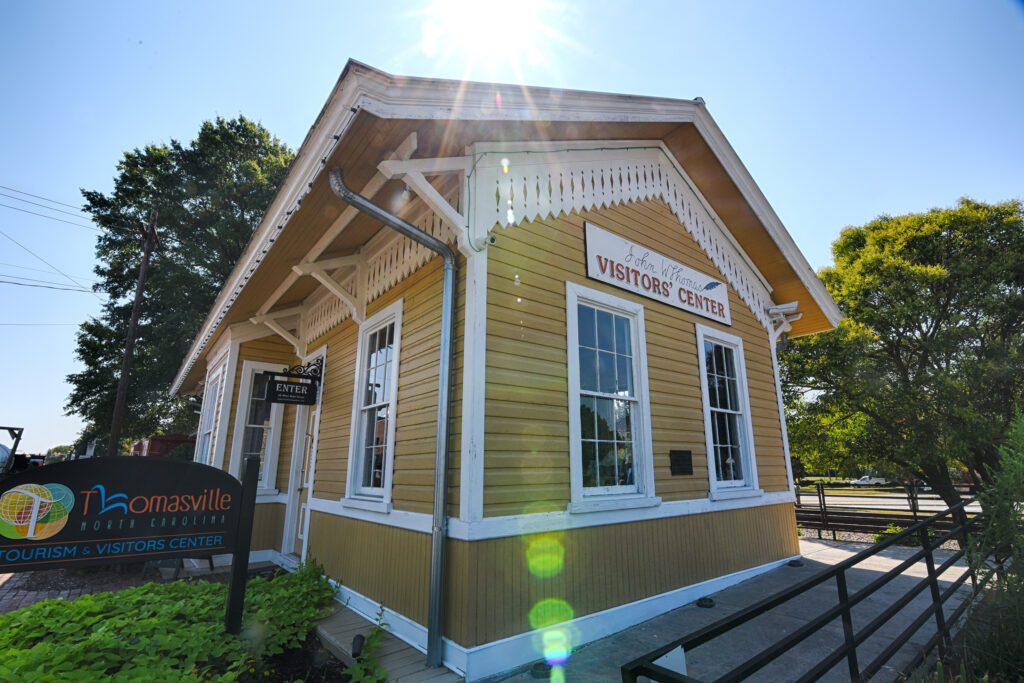
The Depot
44 W. Main St.
Established in 1852, Thomasville was a relatively new community with just more than 300 residents when the war broke out. Many of its men enlisted in the Confederate Army and rushed off to war. The railroad carried vital supplies through town, and toward the end of the war it brought wounded soldiers sent here to convalesce. The station house is one of the oldest frame depot buildings left in the state. Construction on it began just after the Civil War, and it functioned as a depot until 1912. Today it serves as the town’s visitors center.
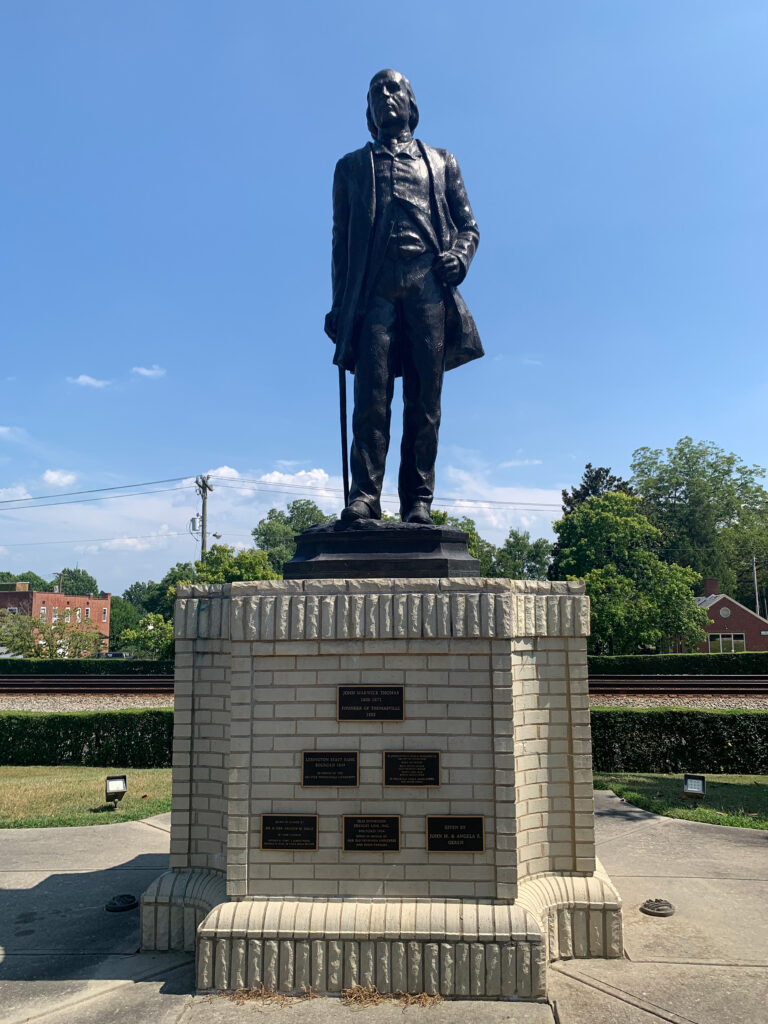
Thomas Statue
28 W. Main St.
John W. Thomas, who represented the area in the state legislature, laid out Thomasville in 1852 on the proposed route of the North Carolina Railroad. Three years later, the line was completed to the new town, and the first train passed through on January 20, 1856. Thomas contributed greatly to the town’s growth, and at the outset of the Civil War it had 308 residents, a female seminary, a tobacco factory, and two shoe factories. The statue here to Thomas was erected in 2002, and a time capsule was placed in its base to be opened at the town’s bicentennial celebration in 2052.
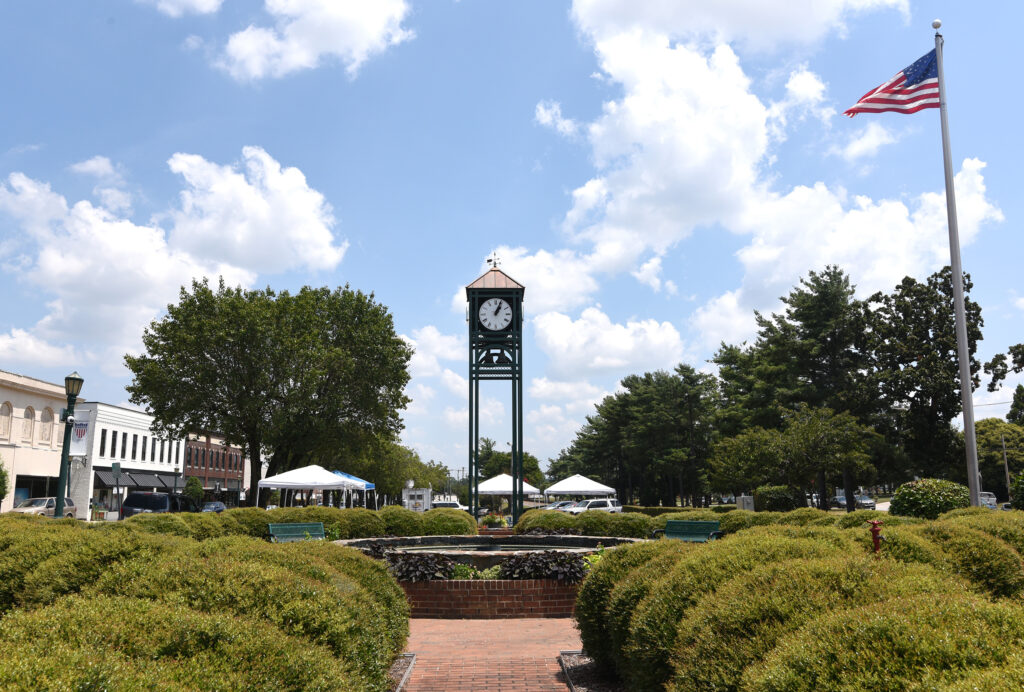
Clocktower and Fountain
Main Street and Salem Street
The fountain and park, across the street from The Big Chair, serve as a town center, which includes a Civil War Trails sign, memorial to military veterans, and one to local resident Nona Ingram Welborn who oversaw the park and fountain’s creation. During the Civil War, the L.L. Thomas Hotel stood across the tracks from this spot and served as a makeshift headquarters for the hospital system setup in Thomasville after the March 1865 Battle of Averasboro and the subsequent Battle of Bentonville.
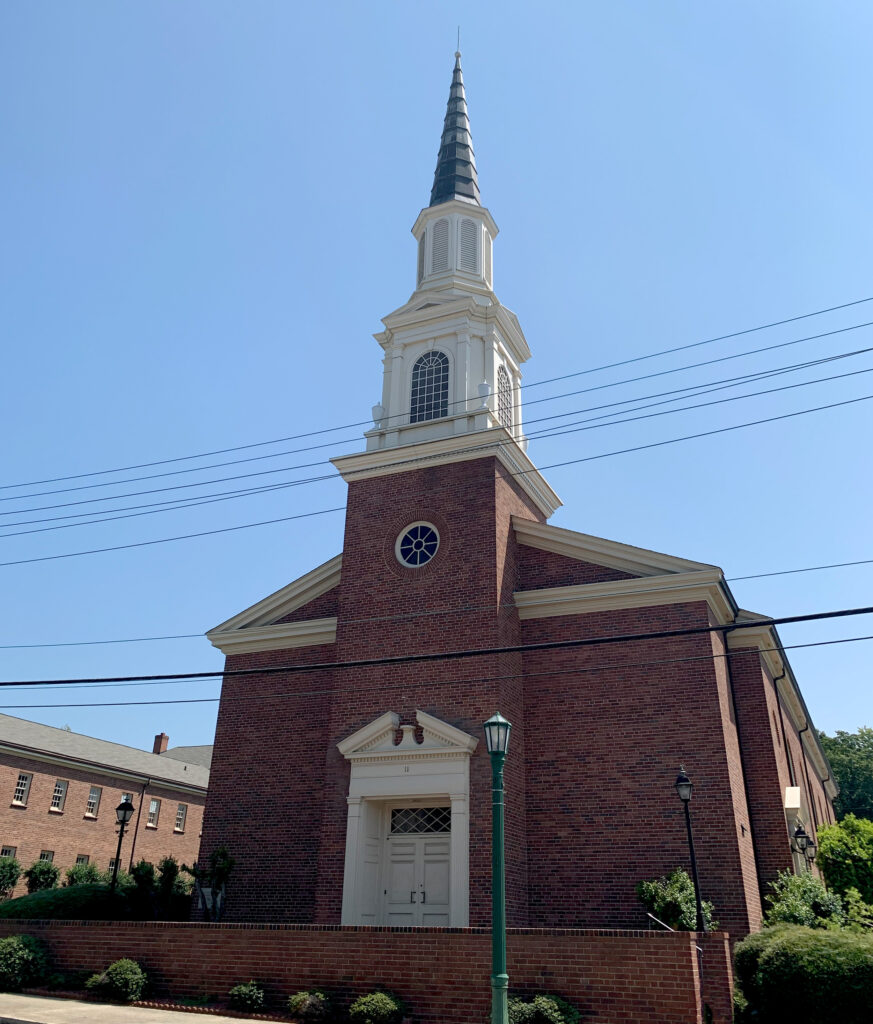
Baptist Church
11 Randolph St.
After the battles of Averasboro and Bentonville in March 1865, Thomasville was transformed into a hospital depot. Wounded Confederate soldiers and some Federal prisoners were brought here by train. Hospitals were established in the tobacco warehouse and in several local churches, including the Baptist Church. Dr. Simon Baruch of South Carolina, later an authority on hygiene and water therapy, treated the men.
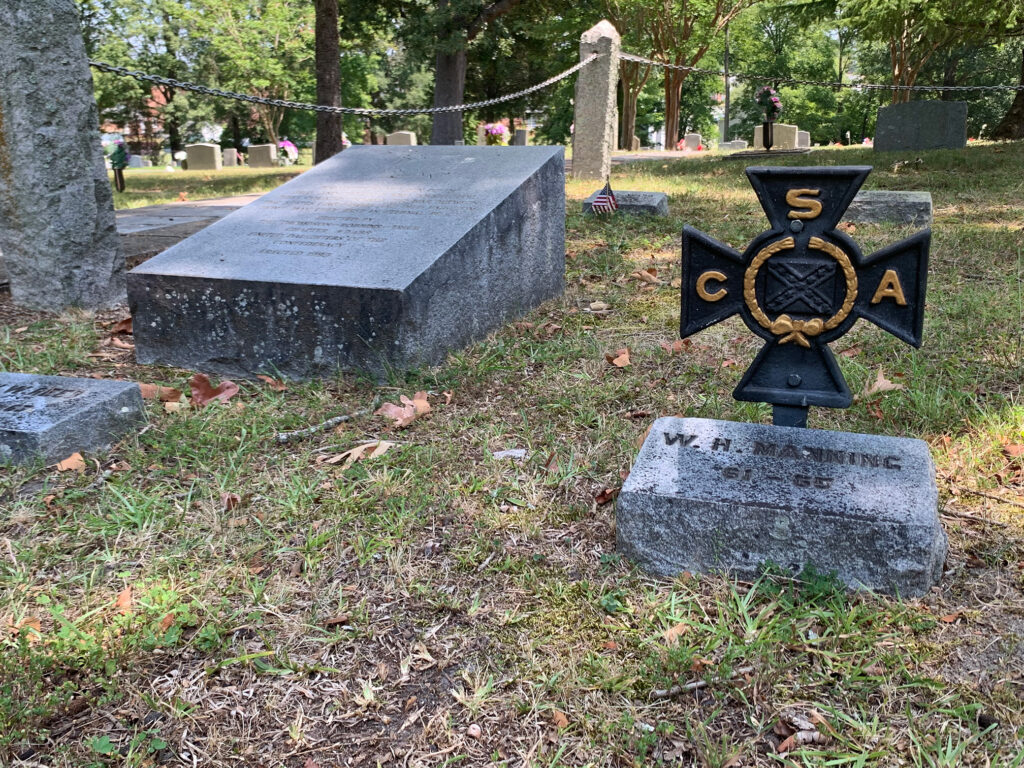
Thomasville Cemetery
205 Memorial Park Dr.
The makeshift hospitals in Thomasville treated hundreds of wounded and sick soldiers with much success, and only 34 patients died in the city—among them 26 Confederates, four Federals, and four unknowns. All were buried in a common plot in the city cemetery. In 1908, a Georgian who had served in the hospital depot led a successful fundraising effort to provide headstones for those who had died, as a tribute to the sacrifices of the soldiers and the dedication of the community that served them.
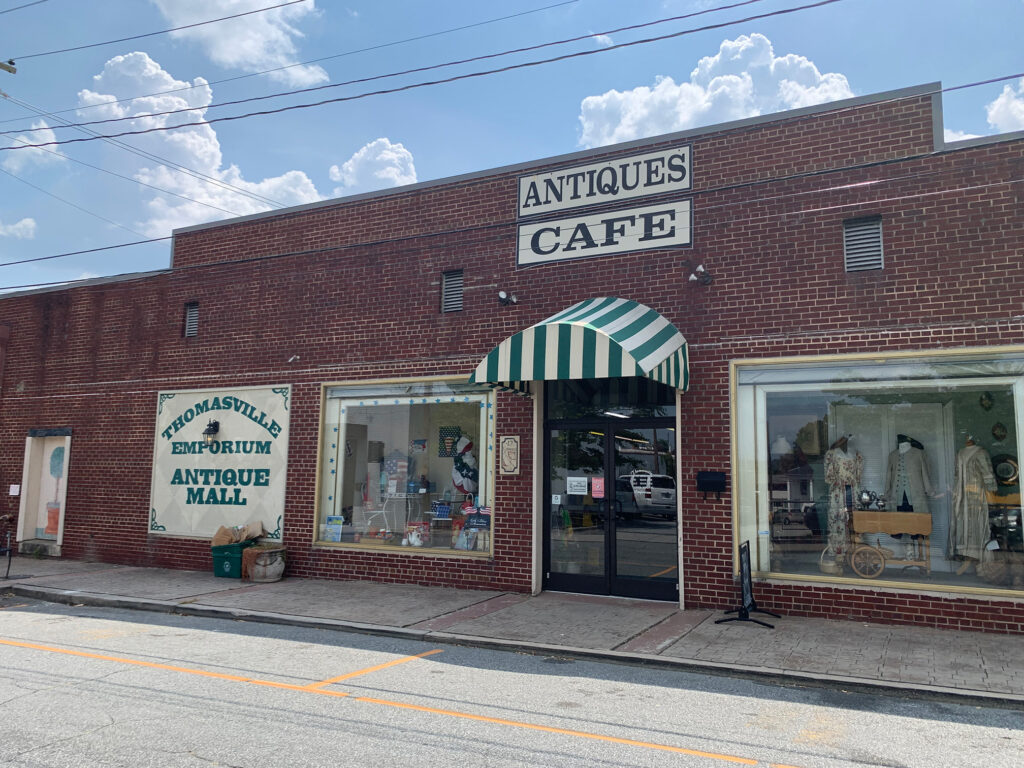
Antiques and Eats
12 Commerce St.
No Civil War road trip is complete without local eats…and antiques. Thomasville has both, including a multi-level antique emporium that also houses JJ’s Side Street Deli, which serves a Hawaiian ham and jam sandwich with a reputation that precedes itself. Enjoy!

